Study guides are tools that can help reduce the stress of a test. If you’re covering a lot of material, it may seem intimidating to consolidate all of the information into one helpful guide. However, with a few tricks for sorting information and finding a design that works for you, you can ace your next test and prepare for any exam in the future!
StepsPart 1Part 1 of 3:Formatting Your Study Guide
1Make the form match the function. There are many different types of study guides, each formatted to suit different subject types and learning styles. Whatever you’re reviewing for, there’s a study guide not only right for the subject but for your particular needs in learning that subject. Organize the information into the most user-friendly study guide you can.If you’re a visual learner, consider using color-coded sections in your study guides or using idea mapping to draw out the information and make it more quickly-accessible.XIf you’ve got a linear mind, organize the information chronologically, or alphabetically, so you can make learn one thing in a series, and then move on to the next.XIf you need to connect to information emotionally to understand it, organize your notes into narrative form to study it better. Translate concepts from math into a story that you can connect to, then organize your study-guide like a short-story you can recite to remember the application of the formulas.If you can memorize information quickly, use a format that will help you memorize efficiently, whether it be recording yourself reciting vocab words and definitions, then listening back on your iPod throughout the day, or by creating flash cards and testing yourself regularly.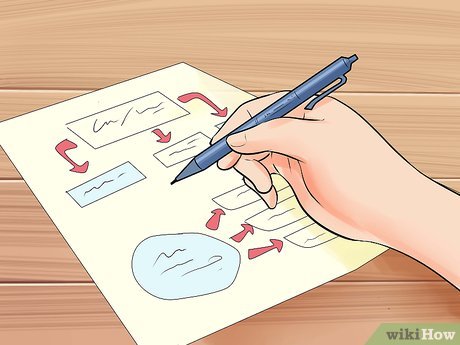
2Draw concept maps to connect main ideas and prioritize information. Concept maps involve writing each main idea into a separate box, which is connected according to their chronology or importance. Then, connect branches of associated information stemming from the main ideas.X This study guide method provides a good visual of how subject material fits together to make a whole concept.An example of a concept map for a history chapter on space flight might involve “The Space Race” as the main heading, which would branch off into separate categories for The United States and the Soviet Union, with trailing data about specific missions, projects, successes, and failures.A formal outline, as you’re sometimes expected to write for an essay assignment, is an example of a concept map. If outlining works for you and organizes information in a way you find useful, outline the info to study. Formal outlines can make excellent study guides, but only if you find them easy to write out. If it would be stressful to make one, find another solution.Diagrams of technical information can help to visually represent processes or procedures that take place by way of a series of defined steps. These start with a main concept and are organized from left to right in a way that highlights important key factors in the order in which they must happen.Timelines are good for outlining a series of chronological events, most often used for subjects like history, politics, and biology.When you’re studying, it can be helpful to prioritize studying broad facts, formulas, and concepts, and the relationships between them. Then, it will be easier to remember things like historical dates, names, and other details.XExpert SourceTed Coopersmith, MBAAcademic TutorExpert Interview. 10 July 2020.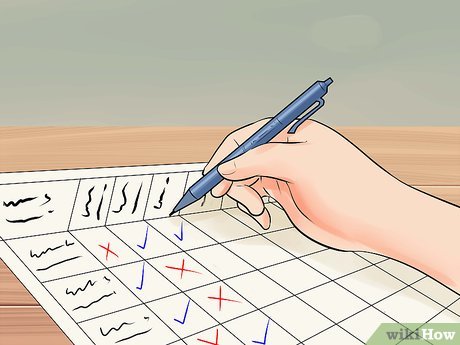
3Use comparison charts to highlight the differences in key concepts. Create study guides using comparison charts, or tables, when it is necessary to compare and contrast a related group of ideas. You might use tables to organize particular parallels in history or biology or to compare different writers for a literature course.For example, a comparison chart collecting different plant species might have the names of various plants in different column headers, with the plants’ kingdom, family and genus in rows underneath. This will help organize the information for quick comparison and review.You could also make use of comparison charts when you’re studying literature, setting up different characters in a novel in different columns, with attributes or other information under each. Likewise, information from two different novels might be nicely organized in a comparison table like this.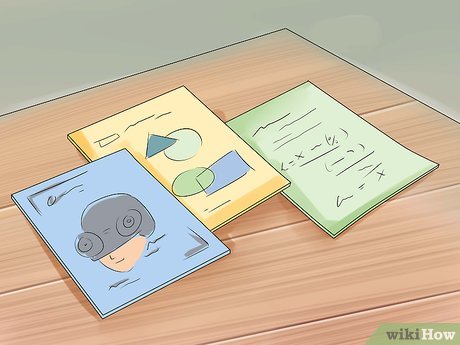
4Use flash cards or concept cards to memorize vocabulary. Flash cards are generally created using blank 5 x 7-inch index cards and may contain as much or as little information as you wish, though they tend to be most effective for memorizing individual words or defining specific concepts. For this reason, they’re especially effective for studying languages and history.Write 1 key concept on the front of each index card and then, on the back of the cards, write whatever fact(s) you’d like to associate with the key concepts. Cycle through the cards yourself, or have someone quiz you using the cards. To make sure you’ve really got things memorized, go forwards and backwards, starting with the front of the card, then with the back. This works especially well for foreign language vocabulary.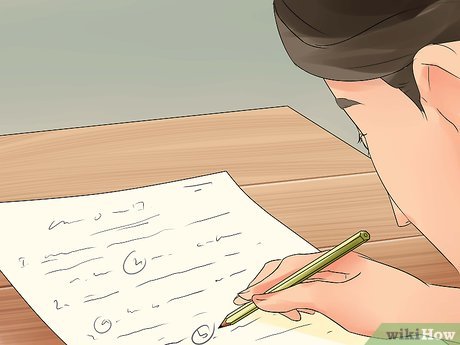
5Write your own sample test to study. Writing up a practice test can be an excellent way to make you analyze the content you’ll be tested over from two perspectives: if you think about what would be good to include on the test, you’ll be thinking like the teacher, and if you can anticipate those questions, you’ll be one step ahead. Try to find out if you’ll be given a multiple choice test, fill-in-the-blank, or required to answer essay questions. Prepare accordingly by writing questions of the sort you’ll be tested over. Use your study materials to help you write the questions. Try to think of it in terms of what an instructor might ask you, then write out the answer to those questions the way you would on your test.XExpert SourceTed Coopersmith, MBAAcademic TutorExpert Interview. 10 July 2020.Many teachers will be willing to provide old versions of the test, if they’re available, for you to use as a study guide. Textbooks will often include sample tests that are an excellent way of studying. While it may seem extra-stressful to take the test more than once, it can be a great way of studying, and might even clue you into which questions will be on the test.If you’re studying with another student from your class, set aside some time for each of you to make up an exam. Then, trade the exams with each other and try to answer each other’s questions. That way, you’ll be more sure you haven’t glossed over anything important.XExpert SourceTed Coopersmith, MBAAcademic TutorExpert Interview. 10 July 2020.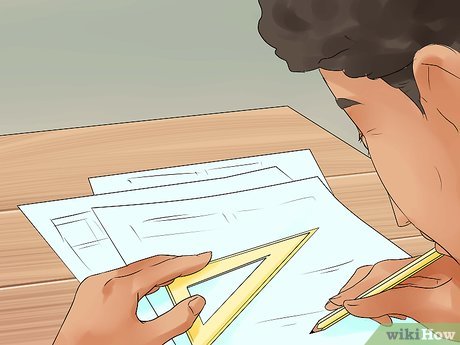
6Study multiple study guides. Create a study guide in a combination of formats, using the main concepts and supporting information you pulled from your study materials. You may draft the guides on paper, by hand, or use a computer word processing, spreadsheet or specialized study guide program to organize your information.Some students find that re-writing notes and organizing the information into hand-written study guides forces your mind to connect more physically with the information when compared with typing. While rote recopying of notes has no effect on memory, actively reading and rewriting information can help you double-up on the studying: you’ve read through the info once when reading, and again, when writing.XAlternatively, if you struggle with hard-to-read handwriting, or simply prefer working on the computer, feel free to type out your study guide, make it as graphically-interesting as you want, and print out copies, or read through it on your mobile device.Part 2Part 2 of 3:Choosing What to Study
1Ask your teacher about what information the test will include. The first place to start studying is by talking to your instructor, professor, teacher, or TA, to direct your efforts and attention to the correct place. If it isn’t a major part of class discussions, make sure you find out what information discussed, read, and covered throughout class this particular test will include.Some courses are cumulative, meaning the information and skills in class accumulate over the course of the semester, while some courses wait to test over all the material until the final examination, testing instead over isolated topics or chapters. Make sure to ask your teacher about the specific content on the upcoming exam for which you’re studying, and only study that information.When in doubt about what to study, emphasize studying new information or skills. While teachers’ may delight in throwing an old question at you to test your memory, it’s more likely you’ll only be tested over the most recent chapters, lectures, and information. Most teachers don’t want to trick you.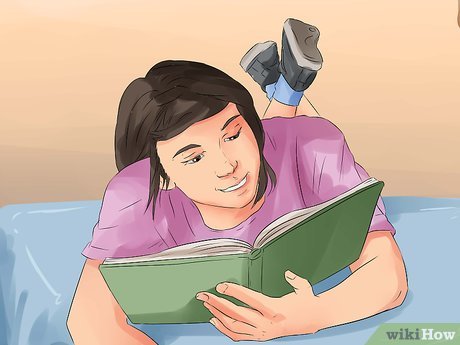
2Go through your textbook and other reading materials. Depending on the class for which you’re studying, the most important source of information is likely the textbook and the associated reading assignments for the class. Many textbooks will have already bolded or otherwise emphasized the most important main concepts, skills, and ideas for you to study, making them excellent resources for study guides.Re-read materials to isolate the main ideas to include in your study guide. When reviewing, it’s probably not necessary to read every word of a particular chapter. Instead, scan for the main concepts to remind yourself and mark this information for inclusion on your study guide. This, in itself, makes for a good first step in reviewing for a test.Look for chapter review or study questions to guide the content of your study guide. If a textbook lists possible questions or comprehension checks, copy them into your notes to include in your study guide. Even if the teacher doesn’t base tests on the textbook, knowing the information extra thoroughly is an excellent way to review for the questions that might be asked.
3Gather and “translate” your class notes. Compile all your lecture notes from class, including any handouts or other supplementary materials that the teacher has provided you. Depending on the focus and content of the course, class notes can be just as important, if not more so, than the textbook and assigned readings.XSometimes, notes taken in class can be messy, confusing, and otherwise difficult to review, making a study-guide more like an all-inclusive and clean version of your class notes. Save a bit of time for recopying, not word-for-word, but taking the main concepts and important ideas the teacher discussed, from your notes. Translate them into a concise set for your study guide.If you’re not a great note-taker, ask a classmate if you might review their notes, being extra careful to care for them and return them in a timely manner. Return the favor in the future by taking closer notes and letting your friend use them for review.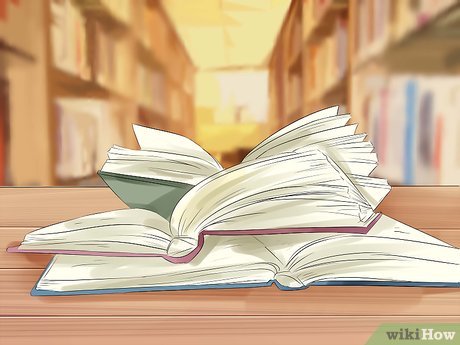
4Seek out additional definitions, explanations, and resources. Sometimes, for particular subjects, outside research might be helpful, or even necessary. If your notes and the text don’t do enough to ensure that you fully understand a concept, skill, or fact, do additional research to clarify important terms that you don’t understand. Fully exploring a particular concept will make sure you’ve got a unique perspective and understanding of it for the test.If you’re studying for a final exam, be sure to collect your previous tests, study guides, and handouts. These can make for excellent study guides.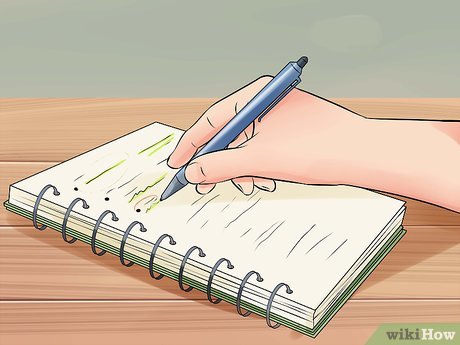
5Focus on the main concepts in each chapter and lecture. Identify the most important concepts in a particular section or chapter, and make sure you understand those at the cost of more specific, but less important information. Depending on the subject, some specific details like dates, formulas, or definitions may be important, but the skill or topic is more important.When reviewing for math or science, make sure to have necessary formulas memorized, if need be, but make applying those formulas the more important study-focus. Understand how to use the formula, and when to use it. The concept behind the formula is more important than the formula itself. This goes, as well, for physics, chemistry, or other science courses, in which it’s helpful to create practical examples that apply the material to real-life situations.When reviewing for English, make sure you know all the characters names in the book you’ll be tested over, but focus more on the plot, the significance of the story, and other themes in the reading, rather than specific details. If you have to refer to “the main character’s sister” in an essay test, because you forgot the name, it won’t matter much if your essay is thoughtful and well-written otherwise.When reviewing for History, it’s common to spend a considerable amount of time memorizing key facts and vocabulary words, but it’s also important to understand the themes of the period of history you’re studying, and the reason those facts are important. Understand the relationship between all the names and dates, and you’ll be in even better shape.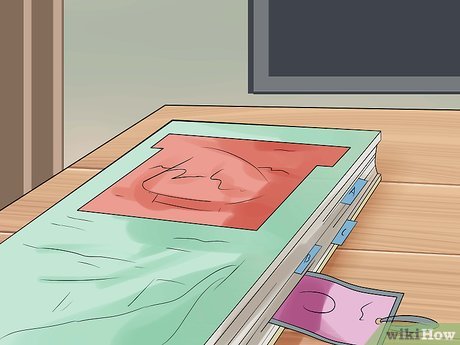
6Prioritize information. Condense all of the study materials into manageable sections that will make studying more convenient than looking through the entire chapter. Use bold headings for different sections of information, and consider organizing things into a bulleted list to access it quickly and efficiently.Identify, explain and demonstrate the relationships between ideas and concepts in sub-steps on your study-guide, or by grouping your study guides into linked packets of info that you can study together. If you’re reviewing for a history final, it might make sense to bind all the war sections into one study-group, or all the information on various presidents, to look for the common themes.Part 3Part 3 of 3:Using Study Guides
1Include everything you’ll need to study, then carry it around with you all the time. If you make sure that everything you’ll need for the test is included in your study guide, you can leave your textbook at home and carry around your handful of papers instead. This is especially important for cumulative exams, in which you’ll be tested over a lot of information. Going through all the individual chapters could be overwhelming, while going through your thorough notes will be quick and effective.Pull out your study guide on the bus, or while you’re watching TV, and just flip through it. The more often you do “hospital rounds” of the testing information, the closer you’ll be to memorizing it.
2Highlight difficult material to return to before the test. If you’re having trouble remembering a particular formula or getting a concept down, highlight it in a designated color, like blue, and continue studying the rest of the material. When you study again, start with everything highlighted blue and make sure you’ve got it down before the test. This can be an excellent way of reminding you not only what you need to learn, but give you specific goals to accomplish in your studying.
3Study in more than one place. Some studies show that changing the location of your study can help increase your ability to memorize information. In other words, if you do nothing but study in your bedroom, it may be more difficult to remember the information than if you studied a bit in your bedroom, a bit in the backyard, a bit in the lunch room during school.X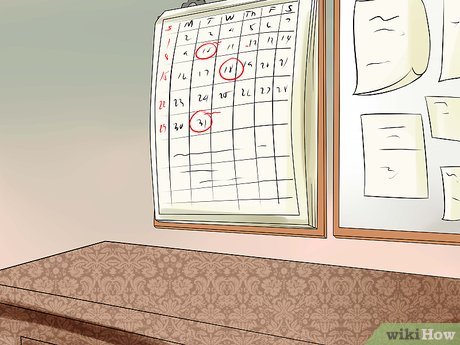
4Schedule your studying. Create your study guides as early as possible, and set aside enough time to study them before the test sneaks up on you. In the few weeks before the test, divide up your time for all the different subjects and sections of each subject you’ll need to study, to make sure you’ve got enough time to spend on each individual area of information. Don’t cram everything in at the last minute.If you struggle with stress anxiety and tend to panic before tests, it can be an especially good idea to get ahead of the game and set deadlines for particular chapters or topics. If you know that you’ve got to cover the first two chapters this week, before moving on to 3 and 4 the following week, it means you’ll have a whole week to devote to that time, and you won’t be able to stress about what’s in 3 and 4 until later.Put your studies in different compartments, and only focus on one at a time. Don’t switch back and forth between five different subjects until you’ve studied for one and completed it.X








